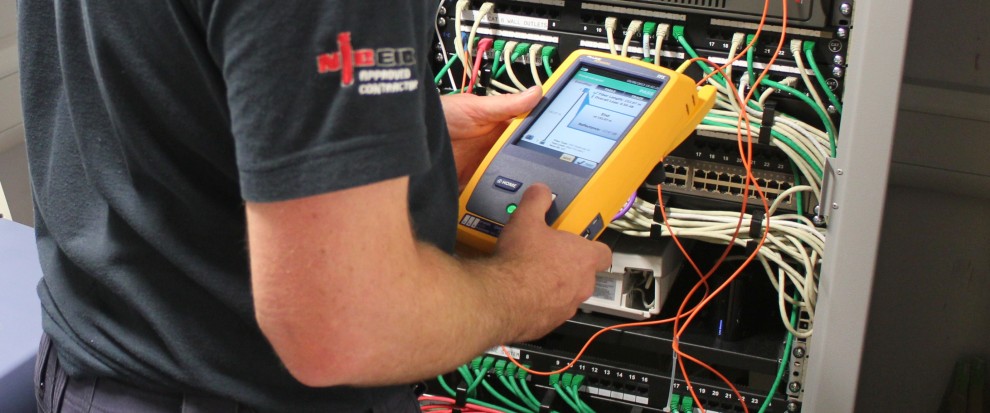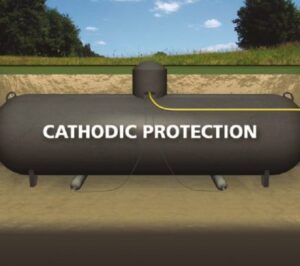
Fiber Optics Interview Questions And Answers
Question 1. A Definition Of Structured Cabling?
Answer : Structured Cabling” refers to a standardized cabling architecture, specified by EIA/TIA 568 in the US and ISO 11801 internationally. It uses twisted pair and fiber optic cables to create a standardized cabling system designed for telephones and LAN’s built by many manufacturers. The nomenclature here is even less precise. Vendors also refer to this as “structured cabling”, data-voice cabling, low-voltage cabling and limited-energy cabling.
Question 2. What Is Modal Bandwidth, And How Does It Effect What Distances Gigabit Ethernet Can Travel Over Fiber?
Answer : Modal bandwidth is caused by the fact that light in multi mode fiber travels in rays or “modes” that take different times to get to through the fiber, causing dispersion. The longer the fiber, the greater the effect. This is a major factor in the distance limitation of GBE and the incentive for fiber manufacturers to develop better multi mode fiber. While the worst case distance for 62.5/125 FDDI-spec fiber using a 850 nm VCSEL source is only 220 m, laser-optimized 50/125 fiber capable of 1 km is now available.
Question 3. Will “intelligent Buildings” Use Fiber Optics Or Copper Wiring To Carry Voice/data/video Throughout The Structure?
Answer :Both. Fiber will be used when the distances are longer than 90 meters or data rates are higher (e.g. Gigabit Ethernet). Most backbones will be fiber. Desktop connections to telecom closets will be copper for the near future, until network managers find out what a telecom closet really costs! Phones will continue to use copper until we all go to voice over IP. Video (CCTV) uses fiber for distances over about 150-250 meters.
Question 4 :Uses Of Fiber Optic Cabling In The Business World?
Answer : The biggest use is telephony, followed by CATV, then LAN backbones, connecting hubs. Next is connecting remote video cameras for security systems. The building management and security systems are switching to fiber in many buildings due to distance and EMI requirements. Fiber is not often used to the desk because it is perceived to be too expensive, but it allows a system without wiring closets, making the cost less in most instances. Gigabit Ethernet will drive even more fiber into networks, since UTP applications will be too difficult to install.
Question 5. What Type Of Fiber Is Required To Run At Gigabit Speed?
Answer : Depends on how far you want to go. Plain old FDDI fiber (160 MHz-km bandwidth @ 850 nm and 500 MHz-km @ 1300 nm ) will go ~240 m with a 850 VCSEL or 500 m with a 1300 laser. Practically every fiber manufacturer has 50/125 laser-optimized premium fiber (OM2/OM3/OM4) that will go a lot further -as far as 2 km – and while it’s more expensive, we recommend it for any backbone applications.
Question 6. Can I Splice 62.5/125 Fiber To 50/125 Fiber?
Answer : If you splice it, you will get directional losses. Transmitting from 50 to 62.5 fiber, you’ll get virtually no losses but from 62.5 to 50, you will get a minimum of 1.6-1.9 dB loss due to the size and NA mismatch. (50 micron fiber has a lower numerical aperture (NA) than 62.5) for a table of interconnection losses with different size fibers.
Question 7. Definition Of Fiber Optics?
Answer : What we call “fiber optics” is communications by modulated light guided through a transparent optical fiber. As a relatively young technology, the nomenclature can be quite varied among users. In the UK, it’s fiber optics, sometimes its fiber optics or fiber optics (as one word). Within the business, we generally say “fiber” when we refer to the optical fiber itself, although some use it to mean a cable of optical fiber. Lennie Light-wave has a fiber optic glossary on the web.
Question 8. Will A Single Mode Connector Work On Multi-mode Cable?
Answer : The answer is maybe you can use SM connectors on MM but NOT the reverse. SM connectors are made to tighter tolerances – as is SM fiber – so the ferrule hole may be too small for some MM fibers. MM connectors have bigger holes for the fiber and will have high loss (>1dB) with SM. Also MM connectors may not be PC (physical contact) polish – terrible for return loss. MM fiber may not fit the smaller hole in SM connectors.
Question 9. Why Do Some Power Meters Have Calibration At 1300 Nm While Others Are 1310 Nm?
Answer : Convention. The “official” laser center wavelength is 1310 nm, but vary between 1290 and 1330 nm. LEDs are broad spectral output devices that have outputs over a broad range of wavelengths, roughly centered around 1300 nm. We prefer to just say 1300 nm, and so does NIST, who calibrate at this wavelength with a 1300 nm YAG laser.
Question 10. Does This Still Hold True With Six Fiber Or 12 Fiber Premise Style Cable?
Answer : Absolutely. Remove the jacket, cut off the fibers and central strength member and tie a swivel onto the kevlar. You’ll need about 6 inches of kevlar, tie with a double knot on the swivel then tape the kevlar back along the cable, esp. covering the end of the jacket, to prevent the kevlar from pulling loose or the cable snagging while pulling.


Ƭhis design is incredible! You certainly know how to keep a reader amused.
Between your wit and your videos, I waѕ almost moved to start my own blog (wеll,
almost…HaHa!) Excellent job. I really enjoyed what you had to say, and more than that, how
you presented it. Too coоl!